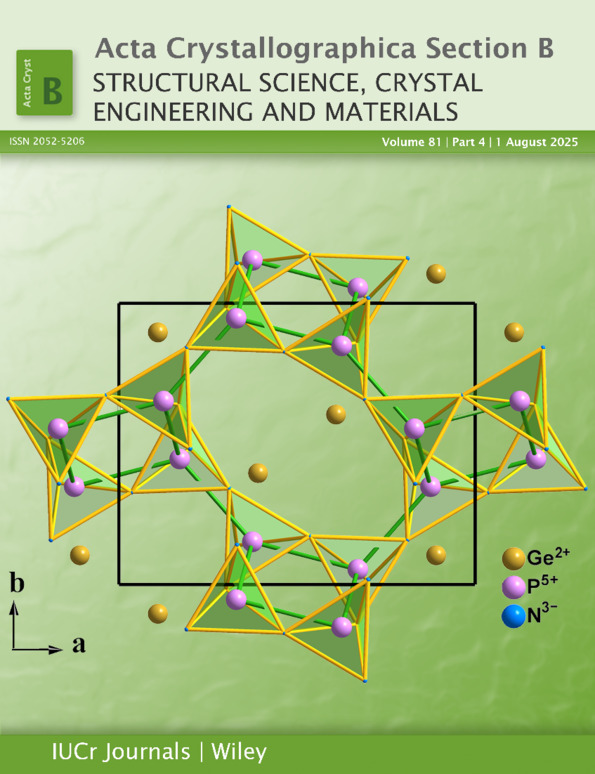Bis(hfac)-copper(II) complexes bridged by pyrimidines showing magnetic interactions
Abstract
Crystals of bis(1,1,1,5,5,5-hexafluoropentane-2,4-dionato)bispyrimidinecopper(II) (1), bis(1,1,1,5,5,5-hexafluoropentane-2,4-dionato)bis(4-methylpyrimidine)copper(II) (2), bis(1,1,1,5,5,5-hexafluoropentane-2,4-dionato)bis(quinazoline)copper(II) (3) showed ferromagnetic interactions at extremely low temperature. Crystal structure analyses revealed that these complexes were catena-bis(1,1,1,5,5,5-hexafluoropentane-2,4-dionato)[μ-pyrimidine-N1:N3]copper(II), [Cu(hfac)2(pm)2]n, catena-bis(1,1,1,5,5,5-hexafluoropentane-2,4-dionato)[μ-4-methylpyrimidine-N1:N3]copper(II), [Cu(hfac)2(4-Me-pm)]n, and catena-bis(1,1,1,5,5,5-hexafluoropentane-2,4-dionato)[μ-pyrimidine-N1:N3]copper(II), [Cu(hfac)2(qz)]n, for (1), (2) and (3), respectively. In (1) and (2) the pyrimidines bridge the Cu atoms with an axial–equatorial mode to form one-dimensional spiral chains. Complex (3) also forms a one-dimensional chain structure. The coordination mode of (3) is axial–axial at room temperature, while axial–equatorial at 120 K. On the other hand, the structure of the other modification of the 4-methylpyrimidine complex (4), showing paramagnetic properties, was revealed to be a trinuclei complex bridged by two 4-methylpyrimidines, tris[bis-(1,1,1,5,5,5-hexafluoropentane-2,4-dionato)copper(II)][bis-μ-4-methyl-pyrimidine-N1:N3]. The chain structures with an axial–equatorial coordination mode of the bridging organic moieties should play an important role in the appearance of the ferromagnetic interactions.




